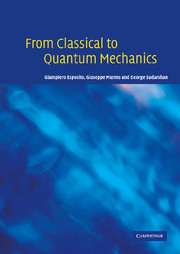Preface
Published online by Cambridge University Press: 14 January 2010
Summary
The present manuscript represents an attempt to write a modern monograph on quantum mechanics that can be useful both to expert readers, i.e. graduate students, lecturers, research workers, and to educated readers who need to be introduced to quantum theory and its foundations. For this purpose, part I covers the basic material which is necessary to understand the transition from classical to wave mechanics: the key experiments in the development of wave mechanics; classical dynamics with emphasis on canonical transformations and the Hamilton–Jacobi equation; the Cauchy problem for the wave equation, the Helmholtz equation and the eikonal approximation; physical arguments leading to the Schrödinger equation and the basic properties of the wave function; quantum dynamics in one-dimensional problems and the Schrödinger equation in a central potential; introduction to spin and perturbation theory; and scattering theory. We have tried to describe in detail how one arrives at some ideas or some mathematical results, and what has been gained by introducing a certain concept.
Indeed, the choice of a first chapter devoted to the experimental foundations of quantum theory, despite being physics-oriented, selects a set of readers who already know the basic properties of classical mechanics and classical electrodynamics. Thus, undergraduate students should study chapter 1 more than once. Moreover, the choice of topics in chapter 1 serves as a motivation, in our opinion, for studying the material described in chapters 2 and 3, so that the transition to wave mechanics is as smooth and ‘natural’ as possible. A broad range of topics are presented in chapter 7, devoted to perturbation theory.
Information
- Type
- Chapter
- Information
- From Classical to Quantum MechanicsAn Introduction to the Formalism, Foundations and Applications, pp. xiii - xvPublisher: Cambridge University PressPrint publication year: 2004
